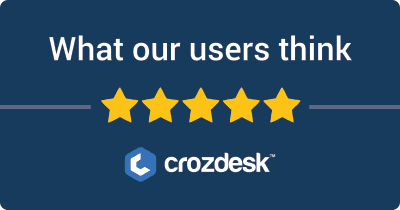
Heap Analytics and Hotjar are both popular tools in the realm of analytics, each serving unique purposes for businesses aiming to enhance user experience and optimize conversion rates. Heap Analytics focuses primarily on automated event tracking, enabling users to collect and analyze data without manual input. Its capabilities support businesses in understanding user behavior on a deeper level through comprehensive data insights. On the other hand, Hotjar emphasizes user interaction by combining analytics with feedback tools, such as heatmaps and session recordings, to visualize how users navigate a website.
Users commonly consider these tools for their ability to uncover insights into user behavior and improve website performance. The choice between Heap and Hotjar often hinges on specific business needs, with Heap being favored for in-depth data analysis and Hotjar for its user-friendly visual feedback mechanisms.
The primary comparison aspects include:
- Features: Analysis and data collection capabilities differ, with Heap providing extensive tracking and Hotjar offering visualization tools like heatmaps.
- Pricing: Pricing models vary, affecting accessibility for different business sizes.
- Ease of Use: User interfaces and the learning curve are significant factors that influence adoption and everyday usage.
Understanding these aspects can help users make an informed decision based on their analytics requirements and strategic goals.
Heap Analytics VS Hotjar: Which tool is the most popular?
| Tool | Number of Reviews | Average User Rating | Positive Reviews | Neutral Reviews | Negative Reviews |
|---|---|---|---|---|---|
| Heap Analytics | 121 | 4.33 | 117 | 2 | 2 |
| Hotjar | 10 | 2.50 | 4 | 0 | 6 |
Heap Analytics is the most popular tool, with a significantly higher number of reviews (121) and a strong average user rating of 4.33. In contrast, Hotjar is the least popular tool, boasting only 10 reviews and a lower average rating of 2.50. This disparity highlights the greater user satisfaction and engagement with Heap Analytics compared to Hotjar.


Heap Analytics and Hotjar: Quick Comparison Overview
| Feature/Aspect | Ahrefs | SEMrush |
|---|---|---|
| Primary Features | – Site Explorer – Keyword Explorer – Backlink Checker – Content Explorer – Rank Tracker |
– Keyword Research – Site Audit – Position Tracking – Content Analyzer – Marketing Insights |
| Target Audience | – SEO professionals – Digital marketers – Agencies focusing on content marketing and backlink analysis |
– Digital marketers – SEO experts – Content marketers – Social media marketers and PPC specialists |
| Main Advantages | – Robust backlink analysis – Comprehensive keyword data – Intuitive user interface – Constantly updated index |
– All-in-one digital marketing tool – Extensive competitor analysis – Wide array of tools for SEO and PPC – Integrated social media management |
| Core Value Proposition | Focused on providing in-depth SEO insights, particularly strengths in backlink profiles and organic keyword rankings. Ideal for users prioritizing content strategy and link-building efforts. | Offers a holistic view of digital marketing, making it easier to manage all aspects of online presence through an extensive range of tools for SEO, PPC, and social media marketing. |
| Ideal Use Cases | – Conducting comprehensive link audits – Developing effective content strategies – Tracking backlinks and organic rankings – Keyword planning for SEO campaigns |
– Managing and optimizing PPC campaigns – Conducting competitive analysis for market positioning – Comprehensive content analytics and SEO tracking – Social media metrics and management |
Most liked vs most disliked features of Heap Analytics and Hotjar
| Tool | Most Liked Features | Most Disliked Features |
|---|---|---|
| Heap Analytics | – ‘Plug and play’ interface accessible for non-developers | – Visualization tools can be difficult for smaller data points |
| – Automatic event capture for easy tracking | – Limited ability to create and customize data tables and reports | |
| – Visual representations of user journeys to identify drop-off points | – Advanced features may lack intuitive design | |
| – Responsive support team providing timely assistance | – Certain user behaviors not recorded, especially on non-mainstream platforms | |
| – Integrates well with various platforms | – No alert system for performance monitoring | |
| Hotjar | – Quick and effective support for issue resolution | – Recent price increases seen as unjustified |
| – Helps understand user interactions to enhance website performance | – Documentation and user interface require improvement | |
| – Easy to use with straightforward integration | – Challenges capturing behavior analytics in specific areas of websites | |
| – Provides valuable insights and serves its intended purpose effectively | – Discrepancies in session limits versus actual performance | |
| – Offers tools like heatmaps and surveys for comprehensive analysis | – Long-term users disappointed with shifts in company focus and values |
Key Features of Heap Analytics vs Hotjar
Sure! Below are the key features of "Heap Analytics" and "Hotjar," along with their benefits to users and any unique aspects of each tool.
Heap Analytics
1. Automatic Event Tracking
- Benefit: Heap automatically captures every user interaction with no need for manual tagging. This saves developers time and allows analysts to easily access relevant data without complex setups.
- Unique Aspect: This eliminates the risk of tracking errors and allows for holistic user behavior analysis from the get-go.
2. Visualizations & Dashboards
- Benefit: Heap offers intuitive visualizations that help users analyze data effectively through easy-to-understand dashboards and reports. Users can filter and segment data to explore different aspects of user interactions.
- Unique Aspect: Customizable dashboard options enable teams to tailor data views to specific KPIs and metrics relevant to their goals.
3. Data Retention and Cohort Analysis
- Benefit: Users can create cohorts based on user behavior over time, allowing for targeted marketing and product improvements. This feature helps identify which user segments are most engaged or converting.
- Unique Aspect: Advanced retention analytics provides deeper insights that help teams understand long-term user engagement.
4. Integrations and API Access
- Benefit: Heap integrates seamlessly with other tools like Zapier, Segment, and various marketing platforms. This enhances the data ecosystem, facilitating better workflows and connection between tools.
- Unique Aspect: Robust API access allows developers to pull data into their own applications, enabling custom data solutions.
5. Conversion Funnel Analysis
- Benefit: Users can visual and analyze conversion funnels to identify drop-off points. This helps in optimizing user journeys and improving the conversion rate.
- Unique Aspect: Heap’s capability for detailed funnel analysis with real-time performance tracking stands out, enabling swift adjustments to strategies.
Hotjar
1. Heatmaps
- Benefit: Hotjar provides visual representations of user interactions on a website, showing where users click, move, and scroll. This helps in understanding user behavior and optimizing layouts for better engagement.
- Unique Aspect: Hotjar’s heatmaps are highly interactive, allowing users to switch between different types of heatmaps (e.g., click, move, scroll) easily.
2. Session Recordings
- Benefit: Users can view recordings of real user sessions, providing insights into navigation and behavior. This helps identify usability issues or points of friction within a product or webpage.
- Unique Aspect: The ability to filter recordings by user actions (like dropdown usage or form submissions) allows for targeted analysis.
3. Surveys and Feedback Polls
- Benefit: Hotjar allows users to gather direct feedback from their visitors through customizable surveys and feedback forms. This real-time sentiment analysis provides qualitative data to complement quantitative analytics.
- Unique Aspect: The integration of feedback tools with other features such as session recordings allows users to correlate feedback with specific behaviors.
4. Funnels
- Benefit: Users can track how visitors move through designated paths on their website, helping identify where users drop off most frequently. This insight is vital for optimizing the sales funnel.
- Unique Aspect: Hotjar’s funnel feature is visually appealing, making it easier for teams to spot trends and make necessary adjustments quickly.
5. Incoming Feedback
- Benefit: This feature allows users to collect feedback on specific pages as users are currently interacting with them. This real-time input can inform immediate iterations or tweaks.
- Unique Aspect: The integration of incoming feedback alongside session recordings provides a 360-degree view of user interaction and sentiment on specific pages.
Summary of Unique Aspects
- Heap Analytics emphasizes automatic, comprehensive data collection and powerful cohort analysis, making it a robust tool for data-driven decision-making without heavy setup.
- Hotjar stands out with a focus on qualitative data collection through visual tools like heatmaps and its ability to rapidly collect user feedback alongside behavioral analytics.
Both tools have their strengths, and the choice between them largely depends on whether a user prioritizes automated data analytics (Heap) or qualitative behavioral insights (Hotjar).
Heap Analytics vs Hotjar Pricing Comparison
Pricing Comparison: Heap Analytics vs. Hotjar
| Feature | Heap Analytics | Hotjar |
|---|---|---|
| Free Plan | No | Yes, Basic Plan available |
| Monthly Pricing | – Starter: $0 for up to 5,000 monthly users – Growth: Starting at $3,600/year for up to 10,000 monthly users – Custom: Contact for pricing above 10,000 users |
– Basic: Free – Plus: $39/month (billed annually at $39/month) – Business: Starting at $99/month (billed annually) – Scale: Contact for pricing |
| Annual Pricing | – Starter: $0 – Growth: $3,600/year – Custom: Contact for pricing |
– Basic: Free – Plus: $468/year – Business: Starting at $1,188/year – Scale: Contact for pricing |
| User Limits | 5,000 (Free), 10,000 (Growth), Custom (above 10,000) | Up to 2,000 sessions/month (Basic), 10,000 sessions/month (Plus), 20,000 sessions/month (Business) |
| Key Features | – Automatic data capture – User interactions analytics – Multi-channel tracking – Advanced Segmentation (Growth and above) |
– Heatmaps – Session recordings – Feedback polls and surveys – Conversion funnels (Business and above) |
| Integrations | Extensive, including CRM and data warehousing tools | Various integrations with tools like Slack, Google Analytics, etc. |
| Support | Email support (varies by plan) | 24/7 support for Business and Scale plans; email for others |
| Discounts/Trials | No free trial or discounts mentioned. | 14-day free trial for Plus and Business plans. |
Summary of Key Differences
- Free Plan Availability: Hotjar offers a free plan while Heap does not.
- Pricing Structure: Heap has a more straightforward, tiered pricing based on user volume, while Hotjar’s pricing is more session-oriented.
- Feature Set: Heap focuses on automatic data capture and advanced analytics features, whereas Hotjar emphasizes user feedback through heatmaps and surveys.
- Integrations: Heap provides extensive integrations aimed at enterprise needs, while Hotjar focuses on usability with a balance of popular marketing tools.
This structured comparison highlights the essential pricing and feature distinctions between Heap Analytics and Hotjar, aiding in informed decision-making for potential users.
Support Options Comparison: Heap Analytics vs Hotjar
| Support Option | Heap Analytics | Hotjar |
|---|---|---|
| Live Chat | Not available. | Available during business hours. |
| Phone Support | Not provided. | Not available. |
| Documentation | Comprehensive guides, tutorials, and FAQs readily available. | Extensive articles covering features and setup process. |
| Webinars | Regular webinars for training and product updates. | Offers live and recorded webinars for in-depth learning. |
| Additional Resources | Community forums for peer support and discussions. | Help Center, blog posts, and online courses available. |
Unique Features of Heap Analytics Vs Hotjar
| Feature | Heap Analytics | Hotjar | Added Value |
|---|---|---|---|
| Auto-Capture of Data | Heap automatically captures all user interactions without manual tagging. | Hotjar requires manual setup for some features. | Saves time for teams, ensuring no data is missed and reducing reliance on developer resources. |
| Event Visualizations | Provides visualizations of user journey without prior setup, showing paths taken. | Offers heatmaps and session recordings; less emphasis on journey mapping. | Users can easily identify friction points in user flows, enhancing the user experience and conversion rates. |
| Retroactive Analysis | Allows users to retroactively analyze data not previously tagged or specified. | Focused on current data capture and analysis. | Empowers teams to explore past trends and behaviors, adapting strategies without losing historical context. |
| Multiple Touchpoints Tracking | Enables tracking of multiple user touchpoints across different devices seamlessly. | Primarily focuses on individual sessions and current interactions. | Delivers a comprehensive view of the customer journey, facilitating better cross-channel strategies. |
| Funnel Analysis | Auto-generates funnels based on defined user events, visualizing drop-offs. | Requires manual setup to create funnels. | Simplifies the debugging process, allowing teams to quickly identify and address bottlenecks in conversions. |
| Custom Event Recognition | Users can define custom events post-data capture for deeper insights without losing historical data. | Custom events are typically set up beforehand and might limit flexibility in exploring untapped areas. | Adds flexibility in data analysis and allows for more meaningful insights as new priorities emerge. |
| Integrated A/B Testing | Automatically tracks A/B testing results along user journeys to measure impact efficiently. | A/B testing is not a core feature; relies on integrations with other tools. | Provides immediate insights into the effectiveness of changes without needing separate analysis tools. |
| No-code Setup | Users can set up and analyze data without writing any code. | While user-friendly, some features still require technical setup. | Broadens accessibility for non-technical users, enabling data-driven decision-making across teams. |
| Personalized User Segmentation | Advanced machine learning identifies distinct user segments based on behavior patterns. | Segmentation capabilities are more basic or require manual classification. | Enhances targeting for marketing campaigns, improving personalization and engagement. |
Both Heap Analytics and Hotjar offer unique features that differentiate them from traditional analytics tools, delivering added value in user experience analysis, data capture, and actionable insights. These differences can significantly influence a team’s decision when selecting the right analytics solution for their needs.


